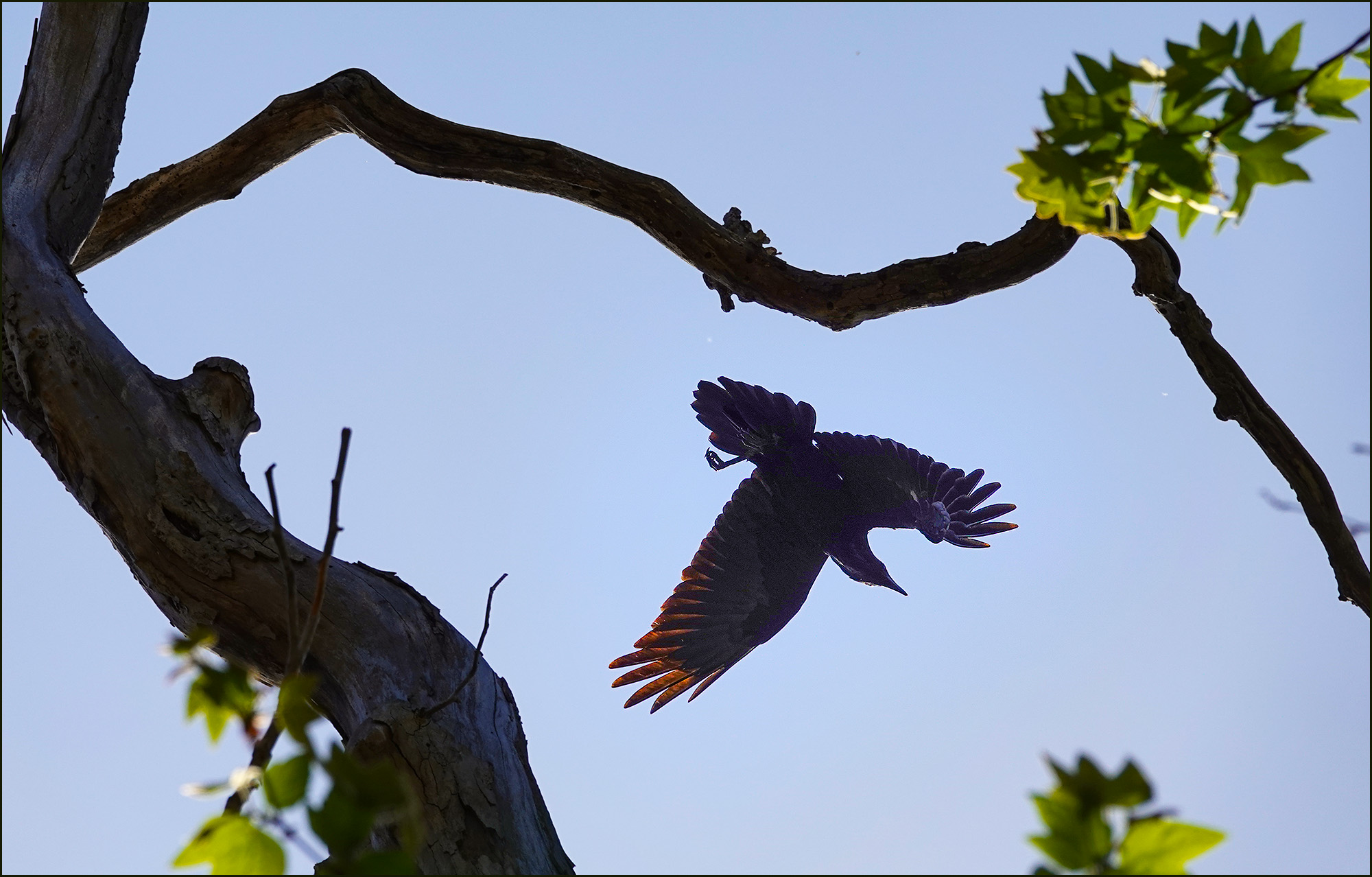This is just a crow common raven, and not even that great a picture of a raven. However, I had to lie on my back for several minutes to get it, and if I'm going to sacrifice myself like that then I'm damn well going to make sure everyone sees it.
And really, it's kind of a cool picture in its own way.


That's a Common Raven. The main tell is the wedge-shaped tail, but the wings also give a clue. Starting from the outside end of the wing, there's a smallish feather, P10, followed by four feathers that stick out like fingers (P6-P9). Next, P5 is slightly longer than P4, and then the remaining primaries and the secondaries form a nearly straight line along the trailing edge of the wing.
In an American Crow, P10 is even smaller, and P5 is almost as long as P6, so it looks like there are five fingers rather than four (plus the small "thumb" feather). The American Crow's tail is also shorter and only slightly rounded.
Fun fact: The Fish Crow, of the eastern US, has flight feathers that are shaped more like those of the Common Raven than the American Crow.
Fun fact #2: Birds do have an actual thumb, called an alula, on each wing, but it's usually hard to see. They extend them for low-speed maneuvers such as landing, much like leading edge slats on an aircraft wing.
Or, to make it simple, you don't often see spreading wingtips like that on a crow, whatever the feathers are called. And a raven is two or four times bigger than a crow so it should be an easy call. Also a raven's wings make a whoosing or almost whistling sound once it gets going, although probably not when it's just taking off like this, and you probably wouldn't hear it in the urban noise of Irvine anyway.
Ce n'est pas un corbeau.
Very nice! Makes me want to re-read Game of Thrones again.
The sacrifice in time & comfort was worth it; crow or raven, the composition is effective.
I'm not sure I like that crow's attitude.
I roll my eyes at your pitch-ing a fit over the bird’s attitude. Yaw aught to just appreciate its flight prowess no matter how high or low it may be.
E. Litella
The easiest way for me to remember is that the raven has a v-shaped tail and there is a 'v' in raven.
Some of us could use help like that with some other birds- at least at a distance w/o binoculars- grackles & starlings, all sorts of birds that I don't see in my current location. And West Nile Virus has apparently caused some avian losses here, although not as catastrophic as with squirrels.
If you turn the picture upside down the bird looks much more majestic as it soars into the sky. Just sayin’.....
I think the feather colors are fascinating. Ravens and crows use thin film interference to generate an iridescent effect. You can see part of the result here in the feathers that are red underneath. If you could see the top side, they would be not-red -- blue to blue-green. Some butterflies do the same thing, generating colors by interference effects rather than pigments. I think ravens do both, a black pigmented feather with a thin keratin film.
It may not be a great picture of a raven, but it's a raven in a pretty great composition, so that's definitely a win.
Though I agree with @dspcole above, a quick rotation makes it a different picture in an interesting way. I spent 30 seconds or so at each of the primary rotations (via convenient browser plugin), and they have different emotional subtexts I hadn't expected.